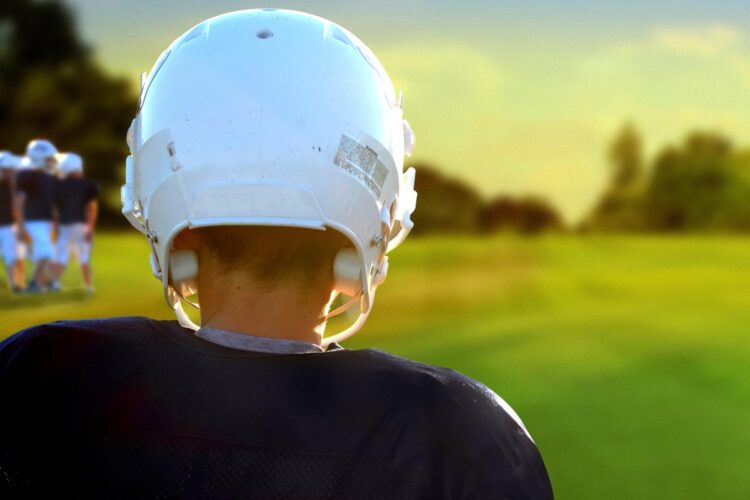
Credit: Ben Hershey
Australia’s and New Zealand’s first set of clinical guidelines for children’s head injuries has been created by a network of specialists based at the Murdoch Children’s Research Institute (MCRI).
The guidelines, developed by the Paediatric Research in Emergency Departments International Collaborative (PREDICT) and published in Emergency Medicine Australasia, will allow emergency department clinicians to best diagnose and treat children’s head injuries while reducing unnecessary exposure to radiation from CT scans. They also address head injuries in children with underlying problems, such as a bleeding disorder.
Matthew Salter took his son Jakob, 15, to the emergency department of a major hospital late last year after he knocked his head after a BMX crash.
“Jakob attempted to do a bike trick at one of our local BMX tracks but he mistimed the landing and crashed headfirst,” he said. “When my wife and I arrived onsite, we found the visor on his helmet had been smashed off, he was distressed and I was worried he may have suffered a concussion.
“When we arrived at the hospital he vomited a few times so to rule out a head injury he received a CT scan and was observed overnight.”
Under the new head injury guidelines, Jakob fulfilled several risk factors for a CT scan and observation.
Mr Salter said it was comforting to know these guidelines were in place to ensure all children received the same treatment regardless of where they lived in Australia.
Professor Franz Babl, MCRI Group Leader of Emergency Research, said Australia and New Zealand have not had a specific set of guidelines to help clinicians decide how best to treat individual children under 18 years who come to the emergency department with mild to moderate head injury.
“While we need to rule out any bleeding in the brain, we don’t want to order CT scans unnecessarily, because it increases children’s lifetime radiation exposure,” he said.
“The lack of standardised guidelines meant children were receiving different care depending on where they were seen. Widespread uptake of these guidelines will change that.”
Following an extensive search and assessment of international guidelines such as those used in Canada, the US and the UK, the PREDICT working group developed 71 recommendations and an imaging/observation algorithm relevant to the Australian and New Zealand setting. The new guidelines cover patient triage, imaging, observation versus admission, transfer, discharge and follow-up.
Head injury is one of the most common reasons for children to present to emergency departments.
In Australia and New Zealand about 10 per cent of children who present with head injuries of all severities have CT scans. Despite traumatic brain injuries being uncommon, persistent post-concussive symptoms affect more than a third.
Professor Stuart Dalziel, Cure Kids Chair of Child Health Research at The University of Auckland and paediatric emergency physician at Starship Children’s Hospital in New Zealand, said identifying traumatic brain injury in children with seemingly mild injuries could be difficult and over the past 15 years had been a focus of research in emergency departments worldwide.
He said across Australia and New Zealand there had been a variation in practice in the management of paediatric head injury.
The PREDICT working group who developed the guidelines included emergency physicians, pediatricians, neurologists, neurosurgeons, radiologists, sports medicine doctors, neuropsychologists, GPs, paramedics and nurses.
The guidelines can be viewed at predict.org.au
###
Publication: Franz E Babl, Emma Tavender, Dustin W Ballard, Meredith L Borland, Ed Oakley, Elizabeth Cotterell, Lambros Halkidis, Stacy Goergen, Gavin A Davis, David Perry, Vicki Anderson, Karen M Barlow, Peter Barnett, Scott Bennetts, Roisin Bhamjee, Joanne Cole, John Craven, Libby Haskell, Ben Lawton, Anna Lithgow, Glenda Mullen, Sharon O’Brien, Michelle Paproth, Catherine L Wilson, Jenny Ring, Agnes Wilson, Grace SY Leo, Stuart R Dalziel on behalf of Paediatric Research in Emergency Departments International Collaborative (PREDICT). ‘Australian and New Zealand Guideline for Mild to Moderate Head Injuries in Children,’ Emergency Medicine Australasia. DOI: 10.1111/1742-6723.13722
*The content of this communication is the sole responsibility of MCRI and does not reflect the views of the NHMRC or the HRCNZ.
Available for interview:
Media Contact
Bridie Byrne
[email protected]
Original Source
https:/
Related Journal Article
http://dx.





